From the November 2025 issue of Apollo. Preview and subscribe here.
When the French novelist Jules Verne sent his clubbable Englishman Phineas Fogg around the world in 80 days, he sent him via Singapore, Hong Kong and Japan. Perhaps surprisingly, Verne does not seem all that interested in one of travel’s main attractions, the discovery of different countries. Of Japan, he offers a little colour, but only a little: ‘youngsters, who looked as if they were cut-outs from a Japanese screen, were playing among short-legged poodles and yellowish cats that had no tails and were very lazy and affectionate. […] The streets were teeming with people and there was an incessant coming and going.’
Yet while Verne’s globe-trotting novel, with its endless facts about treaties and international border agreements, was finding commercial success, France had become gripped by a mania for Japanese culture. After Japan opened up to foreign trade in 1858, Paris – the city that invented new ways of shopping – became intoxicated with the scents and sights of Japonisme. The style of this obsession is captured by Proust, in his description of his character Odette’s house. As Swann, the love-stricken protagonist of À la recherche du temps perdu, climbs the demimondaine’s stairs, he sees ‘dark painted walls hung with Oriental draperies, strings of Turkish beads, and a huge Japanese lantern suspended by a silken cord (which last, however, so that her visitors should not be deprived of the latest comforts of Western civilisation was lighted by a gas-jet inside)’.
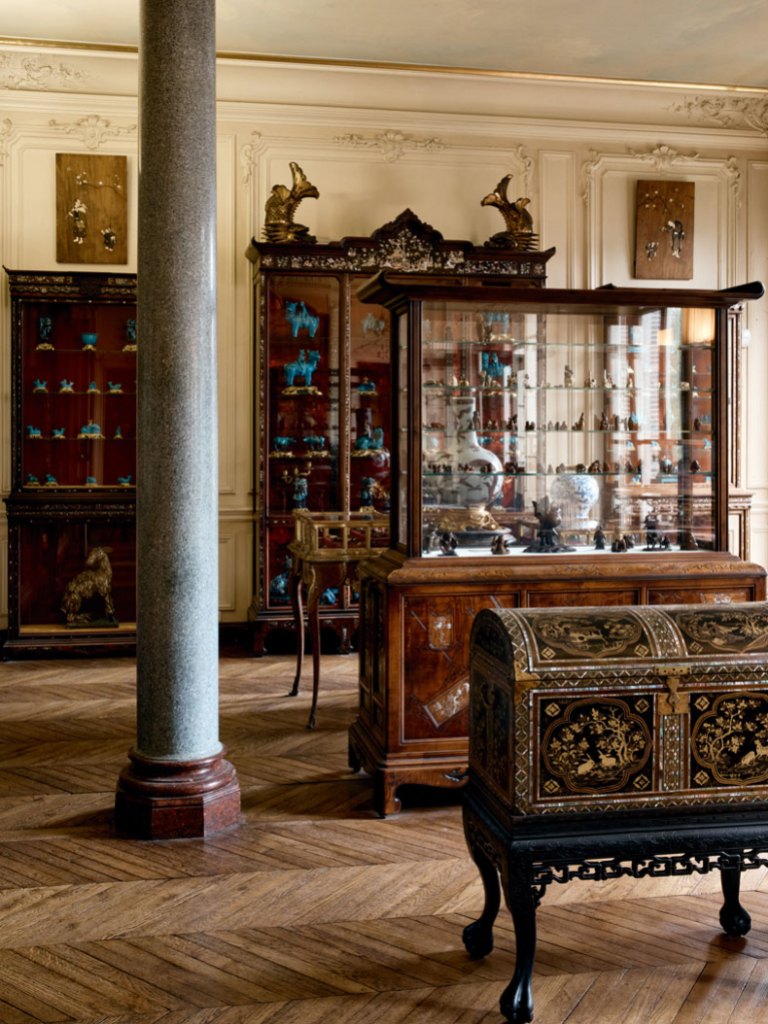
Coupled with the heady scent of chrysanthemums nurtured by Odette, the attractions of this new culture are – in that recently degraded term – immersive. Émile Zola and the Goncourt brothers led the literary world in picking up the trend. Galleries such as Sichel and Bing established themselves on it, and even the department store Le Bon Marché offered an entire floor of Japanese and East Asian goods.
Amid the Haussmann palaces near the Bois de Boulogne, it is possible to see exactly what all this looked like. Fifty-nine Avenue Foch is home to the Musée d’Ennery, a curious part of the national collection of Asian art and an annex of the much better known Musée Guimet. It is open only on Saturdays. The building can accommodate no more than 15 people at a time yet the lucky few who enter will see a collection of Asian works of art that have been left exactly as they were in 1892. The museum itself is not unlike a Vernian mystery. It consists of four large rooms (and a side chamber) dedicated to the the arts of China and Japan that include porcelain, jade, bronzes and netsuke. In the centre of the wall of the second room is a bust of the playwright Adolphe d’Ennery, the museum’s namesake, who made a fortune out of adapting the novels of Jules Verne for the stage. Yet in a twist that could have come out of one of Verne’s novels, to say the museum was named after him is a case of misidentification.
The collection itself belonged to Adolphe’s wife: Clémence, or to give her full name, Joséphine Clémence Lecarpentier Desgranges d’Ennery. Clémence was born to a family of minor nobility in 1823. Her father was an army squadron leader and her first marriage was to a lawyer who helpfully moved to Algeria by himself in 1844, to pursue a career in the colonial administration, when the relationship wasn’t working out. She met d’Ennery in 1841, probably had an affair with him, collaborated on his plays and became a fixture of the literary scene. She appears in the Goncourts’ journals as Gisette and served as the model for Maria in Edmond Goncourt’s novel of theatrical life, Le Faustin. She had to wait until the death of her first husband before she could marry d’Ennery in 1881. She died in 1898.
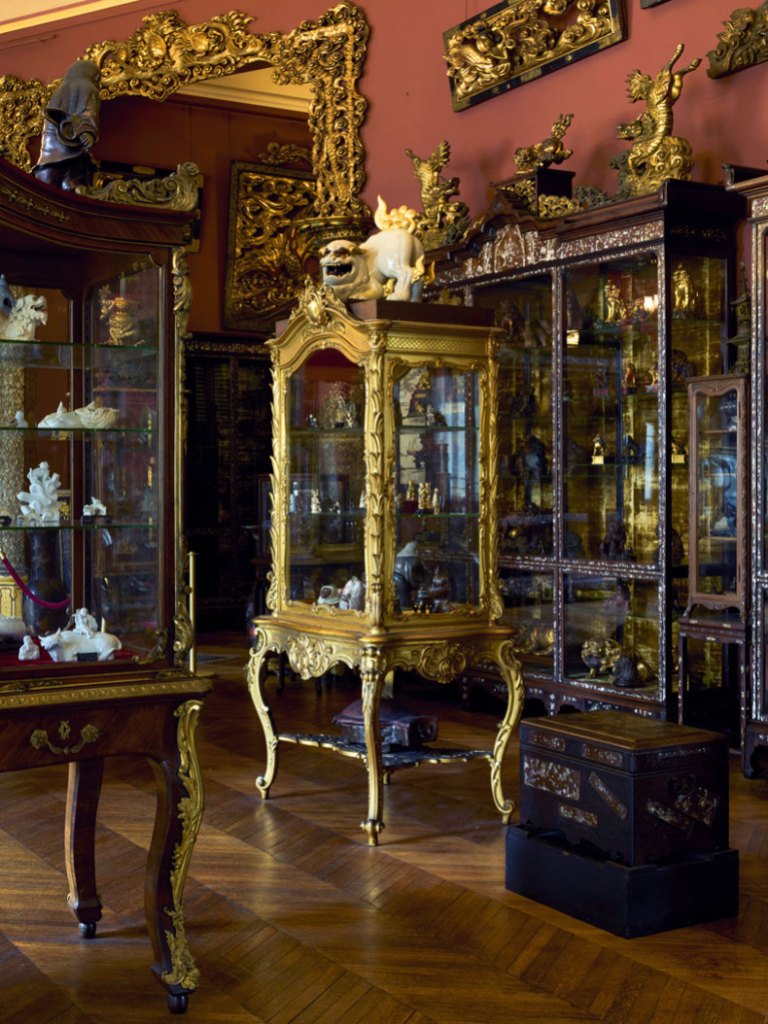
Clémence never left France. She acquired the 6,000 objects on display in her museum entirely from Parisian dealers. Her collection started with a present from her mother of some vases and boxes from China and she fell in love with the tactile quality of small sculptural objects. The art historian Elizabeth Emery refers to an interview in which Clémence tells reporters that ‘unlike her friends, who spent their time and money ordering dresses […] she had chosen to invest in art’.
The story of the museum can be seen either as a story of vitrines or a story of exchange. These two strands, naturally, overlap but the emphasis is slightly different. At first, it is the story of the vitrines that speaks more clearly. A vitrine appears to offer something up for inspection, to exist as part of a scientific endeavour to observe, but with the object fixed behind the cold glass, it also cuts off the viewer. The object behind the glass is not to be picked up and handled, it is not to be used – merely looked at. And yet that doesn’t feel like a prohibition in the rooms of the Musée d’Ennery. Each room is filled with so many that they operate as part of the invitation to explore. Furthermore, the vitrines are themselves objects of exquisite beauty.
There are three types in evidence. The netsuke have special, lower cases, with a ziggurat built up inside to display a pyramid of Japanese craftsmanship. Porcelain and other crafts are displayed in vitrines made by the cabinet maker Gabriel Viardot (1830–1906). As the director of the museum, Pierre Baptiste, says, he ‘was a French man who began to develop a company buying oriental furniture, mostly Chinese and Vietnamese, and transforming them into French, fake oriental furniture’, essentially ripping off the mother-of-pearl panels to add in to his French cabinets. Clémence, however, went one step further, commissioning carved creatures on top of the vitrines that emulated what were thought to be classic ‘oriental’ designs. The final and most incongruous vitrines are in the final room, covered in gilt and in the style of Louis XV.
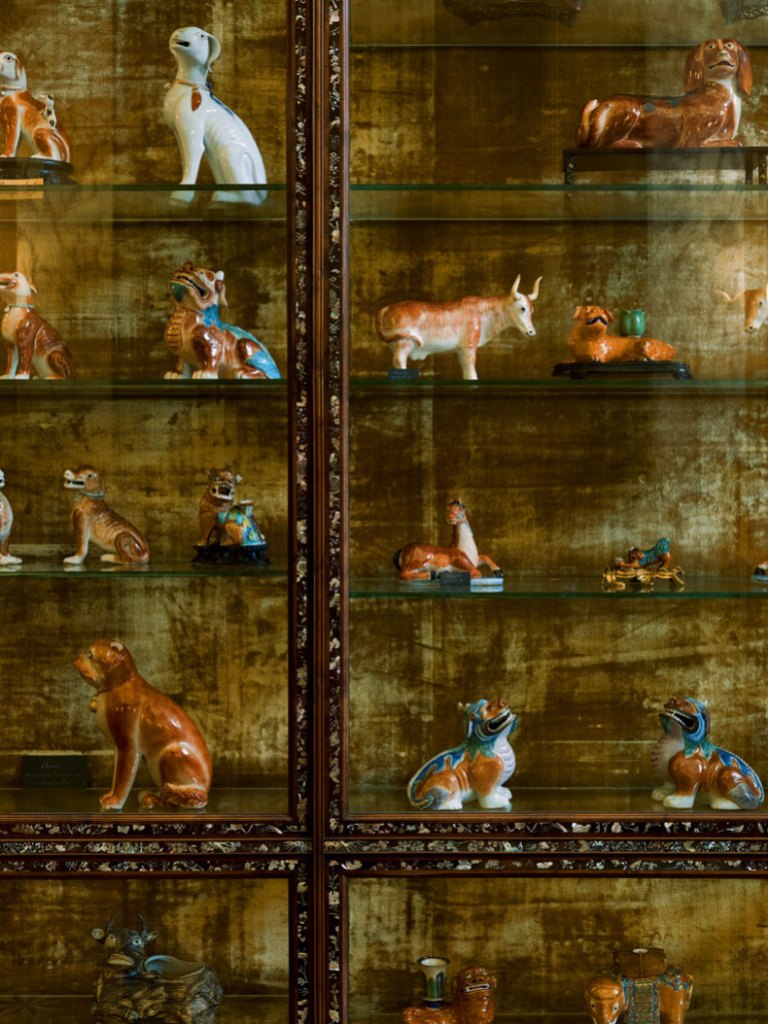
For all the accusations of appropriation that might be levelled at Viardot’s vitrines, there is something magical about them. The mother-of-pearl is pretty, the glass has both a beguiling tone and uninterrupted span and the back of each vitrine is lined with a 19th-century velvet whose luminosity is unrivalled. Behind this superficial attractiveness there is a certain ignorance underpinning them. Even the netsukes’ ziggurats bruit this as some of the edges of the platforms are covered in mother-of-pearl Chinese characters that have been misunderstood by the craftsmen and laid onto the surface the wrong way up, rendering them completely illegible – a gesture of authenticity that accentuates foreignness. Yet again the vitrine and its contents is cut off from any culture.
Nonetheless, Clémence left her collection to the nation so that people could appreciate the work of Chinese, Japanese and Korean artists. This is where the elements of cultural exchange come in. Clémence might have bought netsuke by the boxload (157 at a time from Le Bon Marché) but her interest in these objects was genuine. It was not particularly connoisseurial, but admiring. She kept impeccable records and her inventory has been preserved to this day, offering a much valued insight into how collectors and dealers operated at this time of rapid market expansion.
Seventeenth and 18th-century dog lions were some of the first things she bought, some in their original state, others with ormolu. ‘She would buy many funny things,’ says Baptiste, ‘because she had different criteria for her collection. At first, she started mostly with China, Chinese porcelain, and particularly Chinese monsters […] She also said that some of these chimeras looked like ladies that she knows and she found that very funny.’ Yet the collection is not thoughtless.
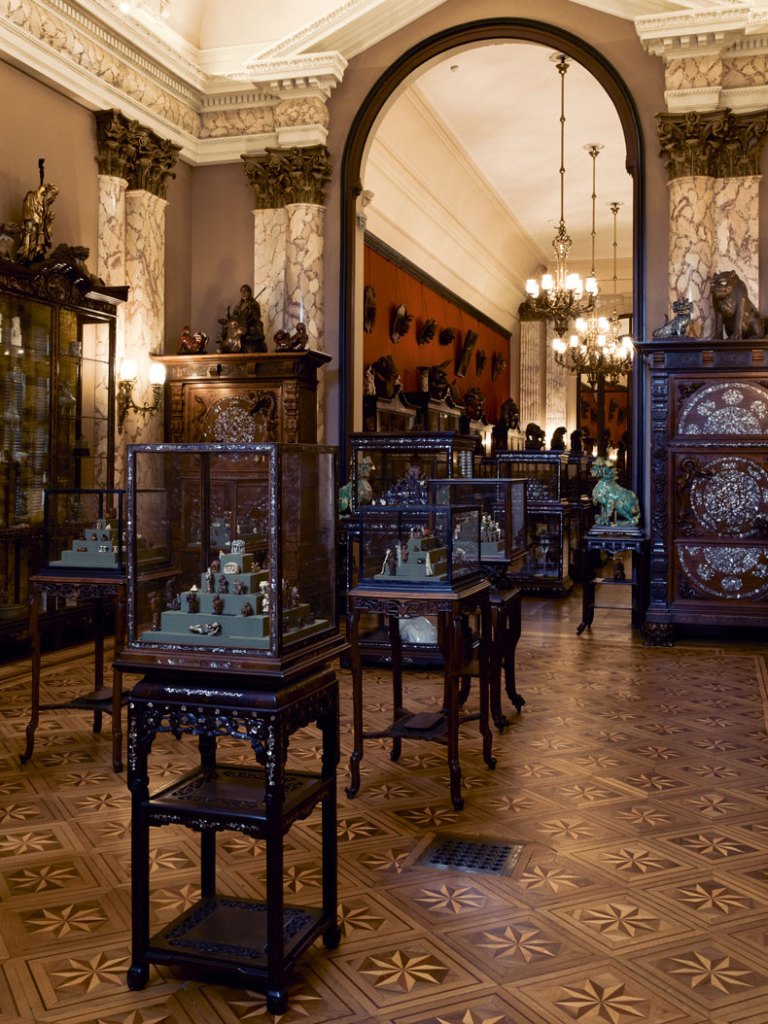
One case of wooden netsuke – much rarer than their ivory counterparts – tells the story of the life of the monk Bodidharma. Among the sheer volume are works of particular fineness. A 17th-century famille rose scroll vase, for example, or among a shelf of jade carved in organic forms a piece of white jade carved into the form of that impossible many-fingered citrus, a Buddha’s hand. Each jade is, to the joy of connoisseurs, still paired with its original stand. It is worth remembering that there was no scholarship available about these objects to either serious collectors or amateurs in Europe; the only value by which people could collect was one of appearance.
In the room with the bust of Adolphe d’Ennery is an object outside a vitrine. It is a largish rabbit made from glass. It is not particularly beautiful. Baptiste goes so far as to say, ‘I know it looks very ugly,’ but its appearance belies its importance. This product of 18th-century Imperial China is the result of the Jesuits teaching the skill of glass-making to the Chinese who became interested in the relationship between porcelain and glass. This fascinating – but to the modern eye rather sad – rabbit, with bright red eyes, is cast in a cloudy glass to mimic a celadon finish. As a result it seems to throb in a slightly sinister light, the red glass eyes suggesting myxomatosis rather than good luck. For all its bad looks, it contains, however, another story of cultural exchange in the opposite direction from Clémence’s fascination.
In the largest of the rooms is another example of this cultural exchange. Four large namban caskets rest upon faux-Chinese stands, glittering in the light. Each casket, surprisingly narrow until you realise that they are designed to travel on a ship, is inlaid with mother-of-pearl. The largest has a panel of shagreen or shark skin, in which the mother of pearl is inlaid. ‘This shape is not at all Japanese,’ says Baptiste. They were brought by Portuguese traders, who discovered Japan by mistake in the early 16th century, ‘and they would come back with the object completely covered with lacquer, gilded lacquer and so on.’ Baptiste offers a bracing summary of Portuguese/ Japanese relations: ‘Always the same questions of market and development of commercial relationships. The Portuguese would be happy to have commercial, direct relationships with Japan. And the Japanese would be at first, very happy with that, because, for instance, the Portuguese provided them with guns. Actually, very rapidly, it provoked a disaster in Japanese history.’
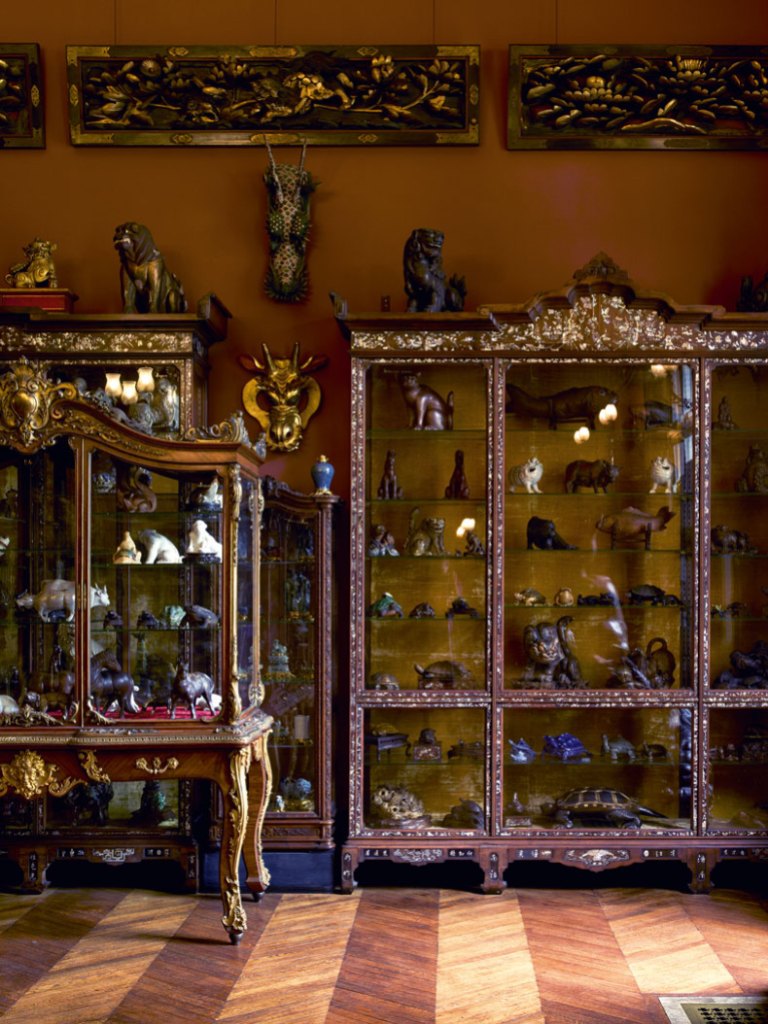
Opportunity and societal collapse – entirely natural partners in the expensive light of the 16th arrondissement, next to the Bois de Boulogne, a stone’s throw from the Fondation Louis Vuitton – are embodied in almost every object in the museum. Yet the museum is about to embark on its own precarious next chapter: a refurbishment and an expansion. The museum will close in the spring of next year as it takes care of vital elements such as the roof, but also build a new underground gallery for Japanese prints which will not affect the fabric of the current building but should attract a larger audience to an area of Paris not thought of for its museums.
The next challenge is how to turn the museum into a space that can accommodate more than a handful of visitors at any one time. The biggest problem is access during an emergency, something an extra staircase would solve. By good luck, the curators discovered unused architectural plans from the 1930s, shortly after the museum opened, to add in a staircase to the fourth gallery. Since the drawings already exist, the museum has been granted permission to build a staircase in this location. This means that over the next few months this sleeping beauty of a museum is also undergoing assessments and plans as the curators work out how to remove everything for the builders.
As Baptiste is pointing out where the new staircase will go, he points to a chandelier that currently hangs above the spot. He hopes that they will be able to keep it there. It is made of brass chimes and bells from a Buddhist temple that have been incorporated into a 19th-century French light fitting, all curlicues and solid arms, their version of an East Asian design. In many ways it is the perfect emblem of this museum, which reveals a chauvinistic belief in the superiority of the acquiring culture, at the same time as a deep respect for others. Its surprising taxonomy leaves masterpieces in peace, available for generations to come.
For details on how to visit the Musée d’Ennery, go to www.guimet.fr.
From the November 2025 issue of Apollo. Preview and subscribe here.